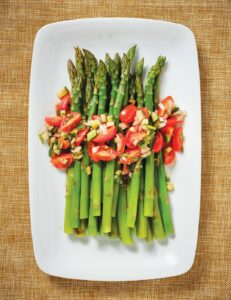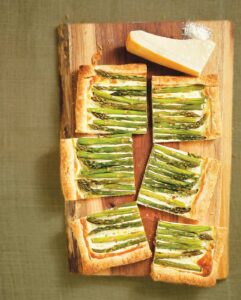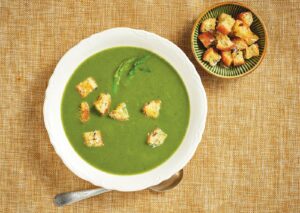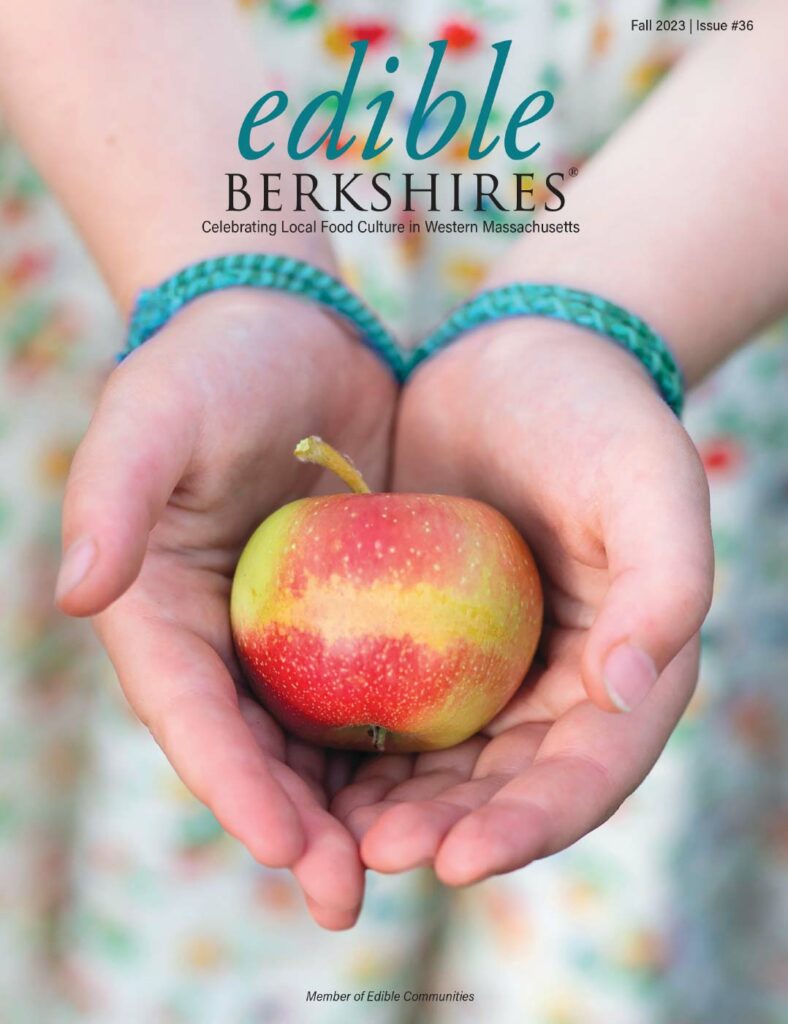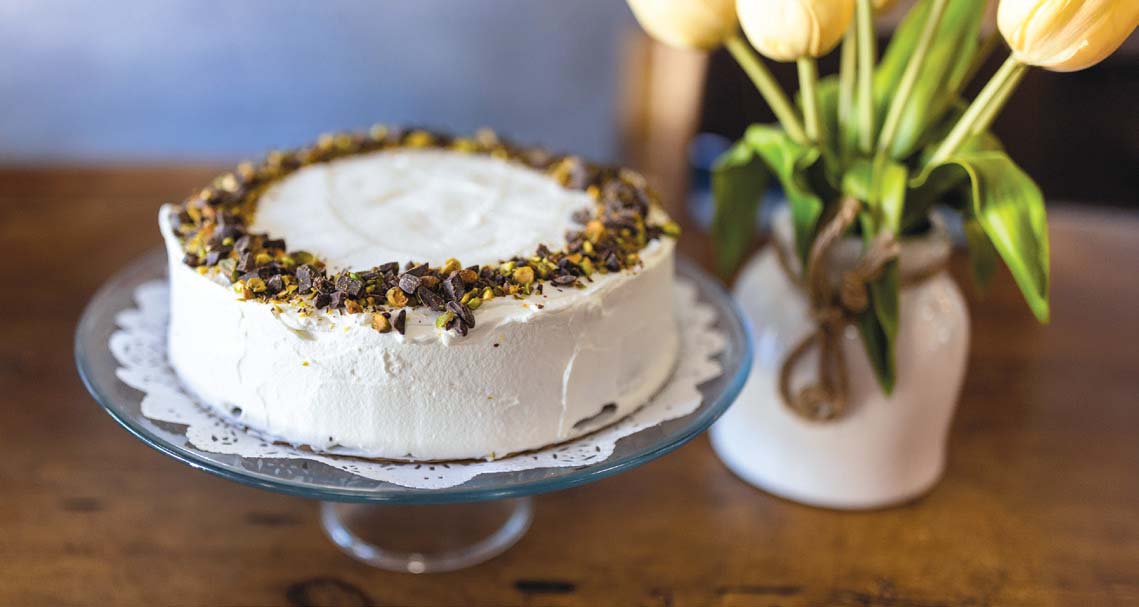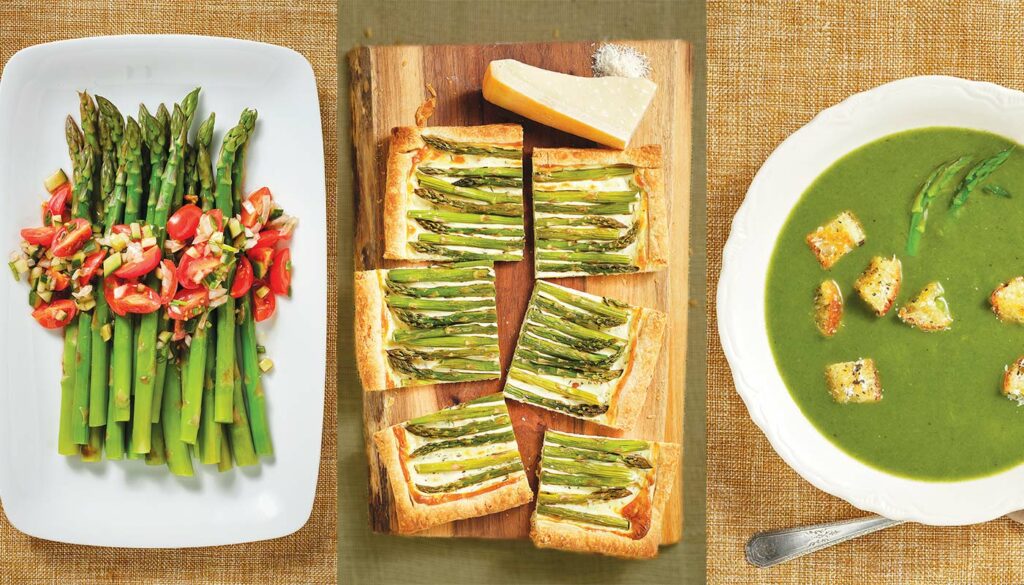
Elegant, versatile, and delicious, asparagus heralds spring.
Its arrival means a hopeful end to chilly gray days and a hello to other beloved spring foods, such as rhubarb, green peas, and tender garden lettuce. Arriving in time for Easter and Passover celebrations, fresh asparagus is most welcome at holiday tables. The vegetable has a long history in the Connecticut River region, just east of the Berkshires. Known today as the Pioneer Valley, the area was once a top asparagus producer and was called Asparagus Valley. These days, the valley hosts an asparagus festival in Hadley, typically in June.
Growing asparagus takes planning and time. Count on two years for a bed to become established but once this perennial vegetable is producing, you could be picking asparagus for 15 years.
A member of the lily family and related to onions, most often asparagus is grown from crowns, basically asparagus roots. It’s best to purchase male crowns as females produce berries, making them less desirable.
Before planting, prepare your bed late summer or fall. It needs full sun, a site free of perennial weeds and loose, well-drained soil, otherwise dig in organic material to enrich and loosen the soil. The asparagus root system is large, growing up to fifteen feet deep.
“Plant asparagus when the daffodils are blooming,” said Western Massachusetts Master Gardener co-President Margy Gwozdz. She suggests hardy “Jersey” types, “The boys,” she called them.
For each, dig holes 6 to 7 inches deep and 18 inches apart. Add a couple inches of compost, then the crowns, spreading out the roots. Cover with 2 inches of soil. When stems start to grow, gradually fill the hole with 2 to 3 inches more soil at a time.
Weed often and mulch plants with straw. “Any weeds will compete with the asparagus,” Gwozdz said. Feed through summer and fall; she uses cow bedding or thick compost. Don’t harvest the first year. Harvest lightly the second year, breaking off stalks at the soil line. The third year, harvest freely, choosing stalks 6 to 8 inches tall. At season’s end, ferns will form. When ferns have died, cut them back and mulch the bed with straw.
LOOK FOR THESE VARIETIES OF ASPARAGUS:
White: Rarely found here but prized in Europe, white asparagus is basically the green variety but grown underground or hilled with soil, called blanching, keeping it white with a mild flavor. Also sold canned and jarred, fresh spears can have tough skin that needs peeling. It’s best cooked.
Purple: Sweeter than green, these pretty purple spears contain anthocyanins, creating cool violet hues. It loses much of its purple color when cooked, so thinly slice it to serve raw in a salad.
Green: This is the asparagus we know best. There are numerous varieties, but you can’t really tell what’s what when buying, so pick what looks freshest. Medium to thick spears are most flavorful and will maintain texture when cooked.
OTHER CONSIDERATIONS:
Buying: Stalks should look fresh at the ends, not dry or woody. Tips should be tight, not mushy or yellowing. Refrigerate in an unsealed plastic bag and use as soon as possible.
Preparing: You can snap off the ends where the stems break most easily or simply cut them below the bottom rubber band, which is faster and will give you more uniform spears. Asparagus doesn’t need to be peeled, but you can do so; peeled spears are elegant and cook beautifully. Choose fatter asparagus and a sharp peeler, starting a bit below the bud tips.
COOKING:
Boiling: Simplest and easiest. Bring a half-inch of salted water to a boil in a large, wide skillet. Add asparagus, and simmer 4 to 6 minutes, depending on thickness, until bright green and crisp-tender. Drain and add butter or a drizzle of olive oil. If serving cold, cool in ice water and drain on a towel.
Sautéing or Stir-Frying: Cut asparagus into diagonal bite-size pieces. Heat a couple of tablespoons of olive oil in a skillet or wok, add asparagus and cook, stirring often, 2 to 3 minutes, until bright green and crisp tender, adding minced or slivered garlic, chilies, or grated fresh ginger.
Roasting: This works best with thicker asparagus. Place asparagus on an olive-oiled rimmed baking sheet. Drizzle with a little more olive oil and season with salt and pepper. Roll them around to evenly oil and season. Roast 8 to 12 minutes until tender.
Grilling: Oil a stovetop grill and cook over medium-high heat. Oil asparagus and season with salt and pepper. Grill, turning once or twice, about 8 minutes, until tender and nicely browned in spots.
